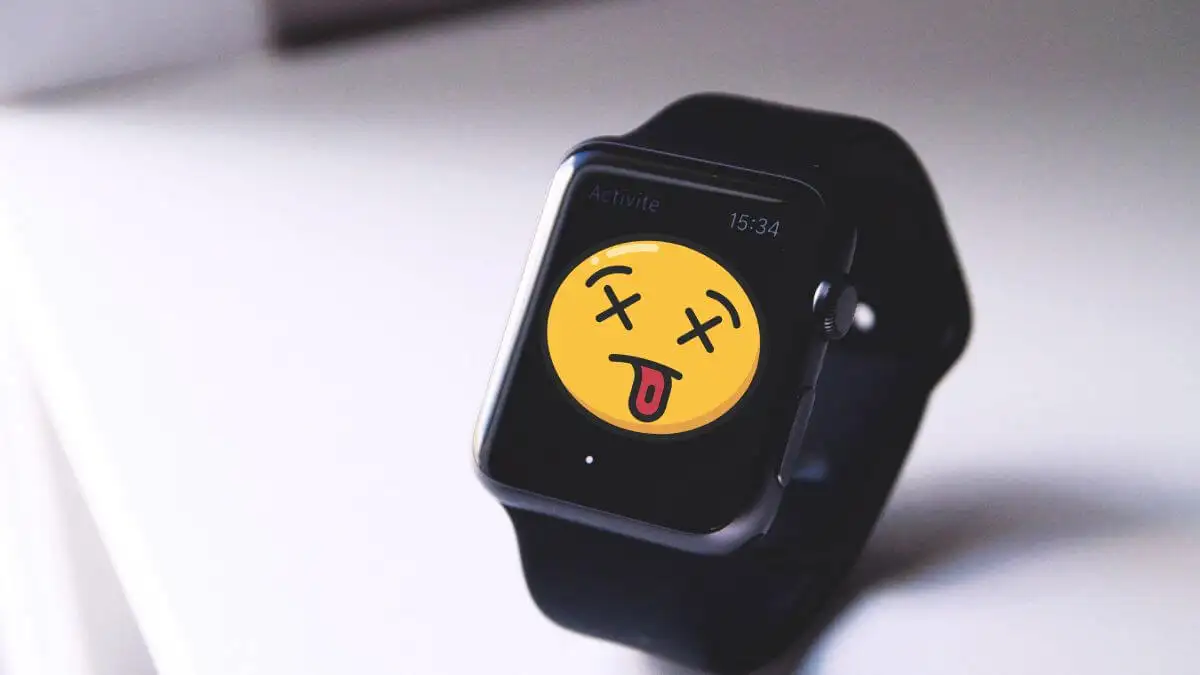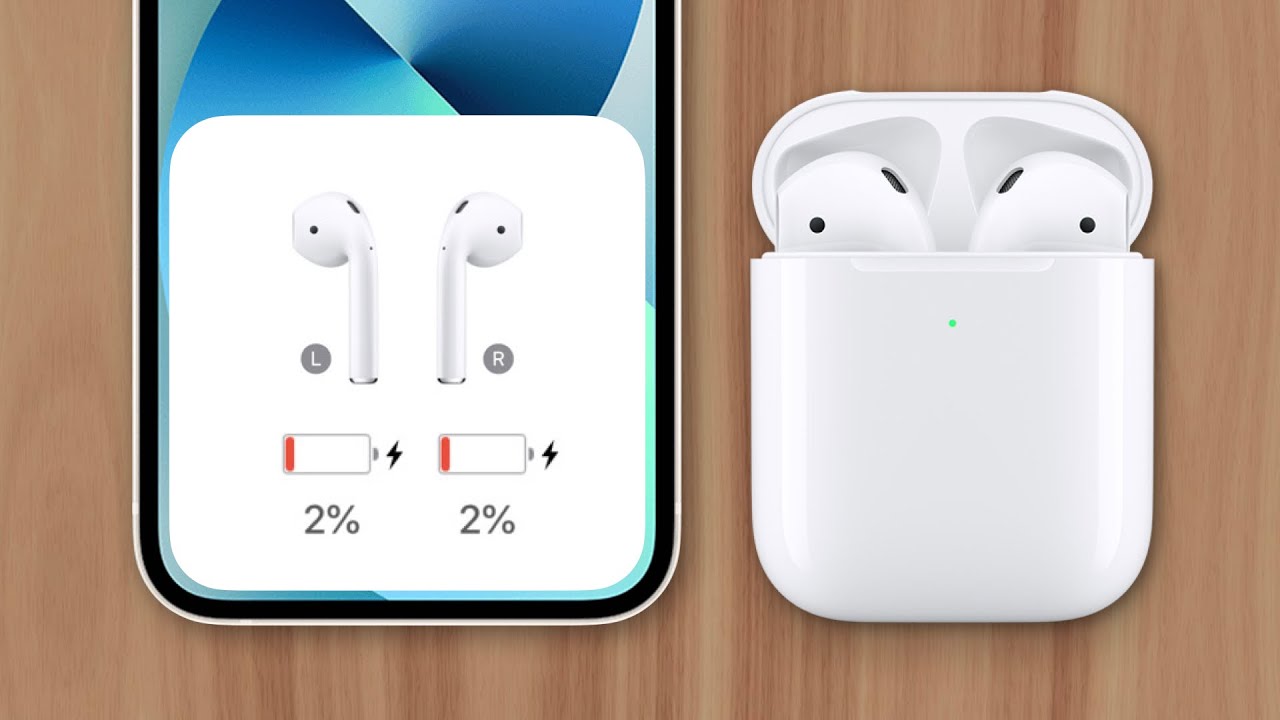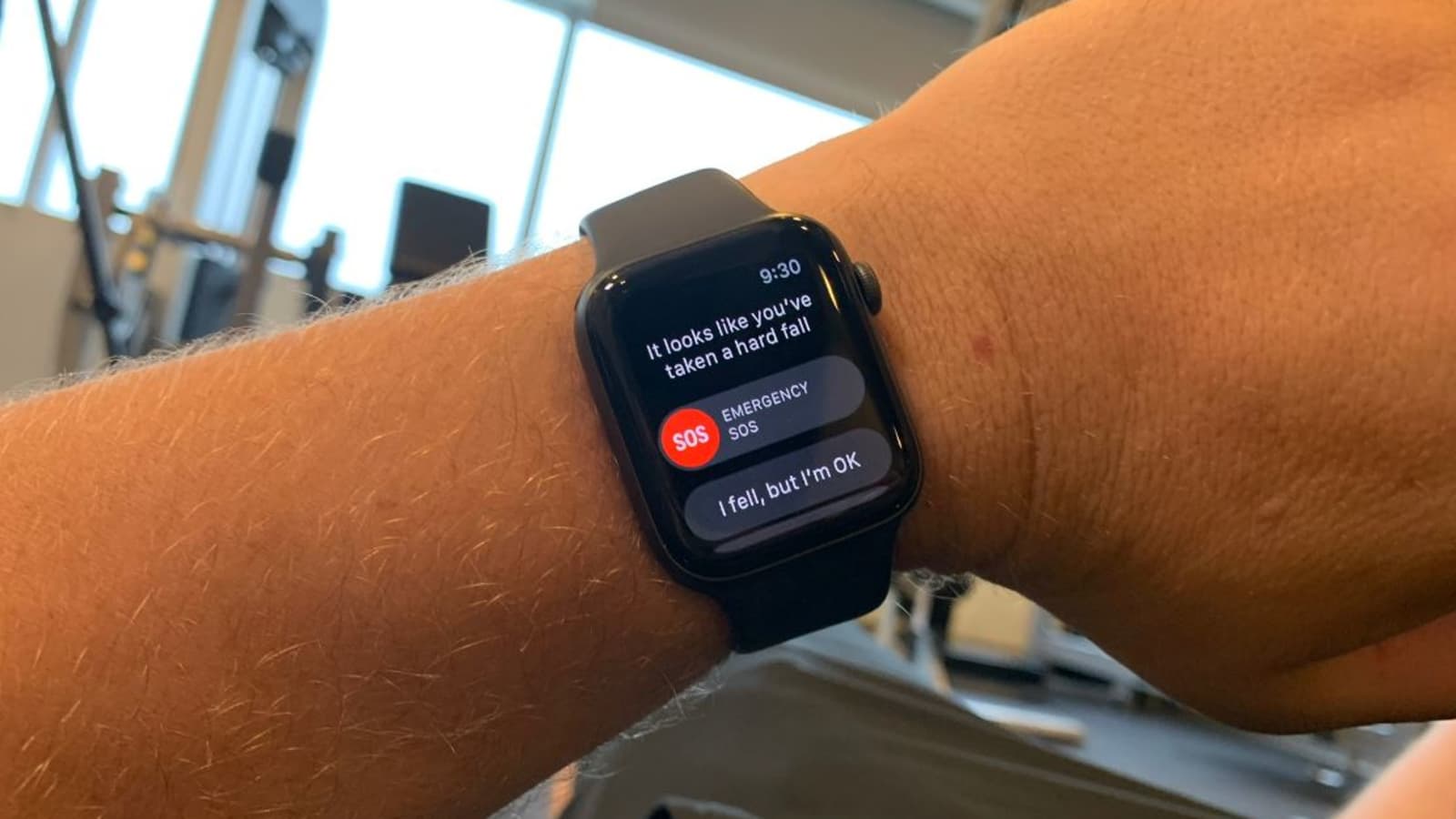Common Reasons Your Apple Watch is Dying So Fast
Are you frustrated because your Apple Watch seems to be losing battery life faster than usual? Several factors can contribute to this problem, and understanding them can help you optimize the battery life of your device. Let’s explore some common reasons why your Apple Watch may be dying so fast:
1. Brightness Level: The brightness of your Apple Watch screen can have a significant impact on battery life. If your screen brightness is set too high, consider reducing it to a more moderate level.
2. Background App Refresh: Some apps on your Apple Watch may be constantly refreshing in the background, consuming battery power. To conserve battery, disable or limit the background refresh feature for unnecessary apps.
3. Notifications: Constant notifications can drain your Apple Watch battery quickly. Consider selecting only important apps to send notifications to your watch, and disable unnecessary or less important ones.
4. Heart Rate Monitoring: If your Apple Watch is constantly monitoring your heart rate, it can use up a significant amount of battery. Adjust your heart rate monitoring settings to a frequency that suits your needs without draining the battery.
5. Workouts and GPS Tracking: Engaging in workouts or using GPS tracking on your Apple Watch can put a strain on the battery. While these features are useful, limiting their use when not needed can help extend battery life.
6. Reduce Motion: Enabling the “Reduce Motion” feature on your Apple Watch can help conserve battery. By reducing the animation effects, the device uses less processing power and prolongs battery life.
7. App Usage: Some apps on your Apple Watch may be battery-intensive. Pay attention to the apps you use frequently and consider closing or removing unnecessary ones to optimize battery performance.
8. Software Update: Keeping your Apple Watch software up to date is essential for optimal performance and battery life. Regular software updates often include bug fixes and optimizations, which can improve battery efficiency.
9. Battery Health: Over time, the battery health of your Apple Watch may degrade, resulting in reduced battery life. Check your battery health in the settings and, if needed, consider replacing the battery.
10. Factory Reset: If all else fails and your Apple Watch’s battery life remains subpar, you may consider performing a factory reset. Sometimes, a fresh start can resolve software-related issues that may be affecting battery performance.
By addressing these common reasons, you can help improve the battery life of your Apple Watch. Experiment with different settings and habits to find the optimal balance between functionality and battery conservation. Enjoy longer-lasting battery and uninterrupted usage with your Apple Watch!
Brightness Level
One of the primary factors that can contribute to your Apple Watch dying quickly is the brightness level of the screen. The brighter the screen, the more power it consumes, ultimately draining your battery. It’s essential to find the right balance between readability and conserving battery life.
To adjust the brightness level on your Apple Watch, you can follow these simple steps:
1. Open the Settings app on your Apple Watch by tapping the gear icon on the home screen.
2. Scroll down and select “Display & Brightness.”
3. On the Display & Brightness screen, you’ll find the brightness slider. Drag it to the left to reduce the brightness level or to the right to increase it.
The ideal brightness level for your Apple Watch will depend on various factors, such as your personal preference and lighting conditions. However, it’s recommended to keep the brightness level as low as possible while still maintaining clarity and visibility.
Lowering the brightness level will significantly extend your Apple Watch’s battery life, especially if you frequently use the device throughout the day. Not only does this conserve power, but it also reduces eye strain and enhances the overall viewing experience.
In addition to manually adjusting the brightness level, you can enable the “Auto Brightness” feature on your Apple Watch. With this setting enabled, the device will automatically adjust the screen brightness based on ambient light conditions.
To enable Auto Brightness on your Apple Watch, follow these steps:
1. Open the Settings app on your Apple Watch.
2. Scroll down and select “Display & Brightness.”
3. Toggle on the “Auto Brightness” option.
Enabling Auto Brightness allows your Apple Watch to dynamically adjust the screen brightness, optimizing it for different lighting environments. This can help reduce battery drain by ensuring your screen is never brighter than necessary.
Remember, finding the right brightness level for your Apple Watch is crucial for both battery life and user comfort. Experiment with different settings and adapt to various lighting conditions to strike the perfect balance for your needs.
Background App Refresh
Background App Refresh is a feature on your Apple Watch that allows apps to update their content in the background, even when you’re not actively using them. While this feature can be convenient, it can also significantly impact your battery life by constantly consuming power.
Here’s how you can manage the Background App Refresh settings on your Apple Watch:
1. Open the Settings app on your Apple Watch.
2. Scroll down and select “General.”
3. Tap on “Background App Refresh.”
4. On the Background App Refresh screen, you’ll find a list of apps that are allowed to refresh their content in the background.
5. Toggle off the switch for apps that you don’t need to have constantly updating.
By disabling Background App Refresh for unnecessary apps, you can conserve battery power and extend the overall battery life of your Apple Watch. However, be cautious not to disable Background App Refresh for essential apps that you rely on for timely updates and notifications.
If you prefer a more granular approach, you can also choose to enable Background App Refresh only for specific apps. Simply toggle off the main “Background App Refresh” switch and manually enable it for the apps that you want to update in the background.
Managing the Background App Refresh settings also allows you to control the data usage of your Apple Watch. Some apps may use a substantial amount of data while refreshing in the background, especially if they require constant internet connectivity. Disabling Background App Refresh for data-hungry apps can help conserve both battery and data usage.
Keep in mind that while disabling Background App Refresh for unnecessary apps can help conserve battery, it may affect the real-time or background data updates for those apps. If you notice any discrepancies in app functionality or delayed notifications, you can revisit the Background App Refresh settings and make adjustments as needed.
By managing the Background App Refresh settings on your Apple Watch, you can strike a balance between battery life and maintaining up-to-date information for essential apps. Take control of which apps are allowed to refresh in the background and enjoy improved battery longevity throughout the day.
Notifications
Notifications can be both useful and overwhelming on your Apple Watch. While they provide valuable information at a glance, constantly receiving notifications can drain your device’s battery quickly. Managing your notifications effectively can help improve battery life while still keeping you informed.
Here are some tips for optimizing notifications on your Apple Watch:
1. Open the Watch app on your iPhone.
2. Scroll down and tap on “Notifications.”
3. From the Notifications settings, you can customize how and when notifications are delivered to your Apple Watch.
First, consider selecting only the most important apps to send notifications to your watch. This will reduce the number of unnecessary notifications that may drain your battery. To do this:
– Tap on “Mirror iPhone Alerts” to sync your iPhone’s notification settings with your Apple Watch. This will ensure that only apps you have allowed notifications for on your iPhone will send notifications to your watch.
– Scroll down to view the list of installed apps and toggle off the switch for any apps that you don’t want to receive notifications from on your Apple Watch.
Next, you can decide how notifications are delivered to your Apple Watch:
– Tap on “Notification Privacy” to enable this feature, which will hide notification details until you tap on them. This way, you can reduce the time the screen is active and conserve battery.
– Consider enabling “Silent Mode” to deactivate sound and haptic alerts for incoming notifications. This can be helpful when you’re in a situation where you don’t need constant alerts, such as during a meeting or while sleeping.
By customizing your notification settings, you can prevent unnecessary distractions while preserving battery life on your Apple Watch. Be selective about which apps send notifications to your watch and take advantage of features like Notification Privacy and Silent Mode.
It’s worth mentioning that managing notifications on your iPhone will also reflect on your Apple Watch. By fine-tuning your notification preferences on your iPhone, you can ensure a streamlined experience on both devices.
Stay in control of your Apple Watch notifications and strike a balance between staying informed and conserving battery power. Customize your preferences to align with your needs and enjoy a longer-lasting battery life on your device.
Heart Rate Monitoring
Heart rate monitoring is a key feature of the Apple Watch, allowing you to track your heart rate throughout the day and during workouts. However, constant heart rate monitoring can consume a significant amount of battery power. Adjusting the settings for heart rate monitoring on your Apple Watch can help optimize battery life without sacrificing this valuable health feature.
Here’s how you can manage heart rate monitoring settings:
1. Open the Watch app on your iPhone.
2. Scroll down and tap on “Heart Rate.”
3. From here, you can customize how your Apple Watch monitors your heart rate.
The first option is to select the frequency of heart rate measurements. You can choose “Every 10 minutes,” “Every 30 minutes,” or “Off.” The more frequently your Apple Watch measures your heart rate, the more battery power it will consume. Consider adjusting this setting according to your needs and preferences.
If you primarily use the heart rate monitoring feature during workouts, you can enable the “Workout Power Saving Mode” option. When activated, this mode disables the continuous heart rate monitoring and only measures your heart rate during workouts. This can help significantly extend your Apple Watch’s battery life during non-workout periods.
Another setting to consider is the “High Heart Rate” notification. Enabling this feature will trigger a notification on your Apple Watch if your heart rate goes above a certain threshold while you’re inactive. While this can be helpful for monitoring your health, it can also impact battery life. Assess whether this feature is necessary for your needs and adjust accordingly.
It’s important to note that heart rate monitoring plays a vital role in providing valuable insights into your health and fitness. While adjusting the settings can conserve battery life, it’s essential to strike a balance between battery conservation and receiving accurate heart rate measurements when needed.
By managing the heart rate monitoring settings on your Apple Watch, you can enjoy an optimal balance between battery life and the benefits of tracking your heart rate. Experiment with different settings based on your lifestyle and make adjustments as needed to maximize both the usability and battery longevity of your device.
Workouts and GPS Tracking
The Apple Watch offers a wide range of workout and fitness tracking features, including GPS functionality. While these features are beneficial for monitoring your workouts and tracking your outdoor activities accurately, they can consume a significant amount of battery power. Adjusting your workout and GPS tracking settings can help optimize battery life while still reaping the benefits of these features.
Here’s how you can manage your workout and GPS tracking settings on your Apple Watch:
1. Open the Settings app on your Apple Watch.
2. Scroll down and select “Workout.”
3. From the Workout settings, you can customize various options related to your workouts and GPS usage.
First, consider enabling the “Power Saving Mode” for workouts. When this mode is activated, the heart rate sensor and other features that may consume battery power are temporarily disabled during workouts. This can help extend the battery life of your Apple Watch while still providing essential workout-tracking capabilities.
If you frequently engage in outdoor activities that require GPS tracking, such as running or cycling, it’s important to note that GPS usage can drain your battery quickly. While GPS is necessary for accurate distance and location tracking, consider enabling the “Start Indoor Workouts Automatically” option. This way, your Apple Watch will use the built-in accelerometer instead of GPS when it detects that you are doing an indoor workout. This can help conserve battery power for outdoor activities where GPS tracking is essential.
Additionally, be mindful of using third-party fitness apps that heavily rely on GPS, as these apps can significantly impact battery life. Opt for official Apple workout apps or well-optimized third-party apps that offer necessary features without excessive battery drain.
Lastly, when you’ve finished a workout or no longer need GPS tracking, make sure to end the workout session on your Apple Watch. Even when not in use, an active workout session that’s still running can continue to consume battery power. To end a workout, simply swipe right on the workout screen and tap the “End” button.
By managing your workout and GPS tracking settings on your Apple Watch, you can strike a balance between accurately tracking your fitness activities and optimizing battery life. Customize the settings based on your preferences and the specific needs of each workout to ensure a longer-lasting battery for your Apple Watch.
Reduce Motion
Reduce Motion is a feature on the Apple Watch that can help conserve battery power by minimizing the use of animation effects. These animations, although visually appealing, require processing power and can contribute to battery drain. By enabling Reduce Motion, you can optimize battery life on your Apple Watch without sacrificing usability.
Here’s how you can enable Reduce Motion on your Apple Watch:
1. Open the Settings app on your Apple Watch.
2. Scroll down and select “Accessibility.”
3. Tap on “Motion,” and then toggle on the “Reduce Motion” option.
Once Reduce Motion is enabled, certain visual effects like parallax wallpapers and screen transitions will be reduced or disabled. This can help reduce the load on the device’s CPU and GPU, ultimately improving battery life.
Aside from optimizing battery life, there are additional benefits to using Reduce Motion. For individuals who may experience motion sickness or find excessive animations distracting, enabling Reduce Motion can provide a smoother and more steady user experience.
While Reduce Motion disables some animations, it does not affect the functionality or core features of your Apple Watch. You can still navigate through your apps, access notifications, and perform other tasks with ease.
If you prefer to have dynamic watch faces with animated elements, you can still enjoy some level of motion without disabling Reduce Motion entirely. Certain watch faces and complications have built-in animations that are tailored to use less processing power and have a minimal impact on battery life.
By enabling Reduce Motion on your Apple Watch, you can strike a balance between visual appeal and battery optimization. Experiment with the feature and determine the level of motion reduction that works best for you. Enjoy an improved battery life while still enjoying the functionality and style that the Apple Watch offers.
App Usage
The apps you use on your Apple Watch can have a significant impact on its battery life. Some apps may run in the background or require frequent data updates, resulting in increased power consumption. Managing your app usage and being mindful of which apps you have installed can help optimize battery performance on your Apple Watch.
Consider the following tips for managing app usage:
1. Close Unused Apps: Just like on your iPhone, apps can run in the background on your Apple Watch, using up battery power. To close unused apps, press the side button on your Apple Watch to view the app carousel, then swipe left or right to find the app you want to close. Swipe up on the app card to dismiss it.
2. Remove Unnecessary Apps: Take a critical look at the apps installed on your Apple Watch and consider removing any that are rarely used. This not only frees up storage space but also reduces the background resources used by these apps, contributing to improved battery life.
3. Optimize App Settings: Some apps allow you to customize their settings to minimize battery usage. For example, social media apps may have options to disable auto-refresh or background activity, reducing their impact on battery life. Explore the settings within each app and tailor them to your preferences.
4. Use Complications Wisely: Complications are small widgets that display information from apps directly on your watch face. While useful, having too many complications can drain your battery. Choose only the most essential and frequently used complications to minimize their impact on battery life.
5. Consider Lite or Optimized Apps: Some apps offer lighter or optimized versions specifically designed for the Apple Watch. These versions often have reduced functionality but consume less power and provide a more focused experience. Consider using these versions for apps that you frequently access on your watch.
6. Avoid Excessive App Switching: Frequently switching between apps on your Apple Watch can increase battery usage. Try to minimize unnecessary app switching and focus on using one app at a time to reduce the overall resource consumption.
By managing your app usage and optimizing your app settings, you can help extend the battery life of your Apple Watch. Be selective of the apps you install and use regularly, and remember to close unused apps to prevent unnecessary battery drain. With mindful app management, you can enjoy a longer-lasting battery on your Apple Watch.
Software Update
Keeping your Apple Watch software up to date is crucial for optimizing performance and maximizing battery life. Software updates often include bug fixes, performance enhancements, and battery optimizations that can significantly improve the overall efficiency of your Apple Watch.
Here’s why you should regularly update your Apple Watch software:
1. Bug Fixes: Software updates address any known issues or bugs that may be present in previous versions. These bugs can sometimes affect battery life or cause unexpected battery drain. By updating your Apple Watch, you ensure that any existing bugs are fixed, contributing to improved battery performance.
2. Performance Enhancements: Software updates often include performance improvements that optimize how your Apple Watch functions. These enhancements can help minimize resource usage and improve overall efficiency, leading to longer battery life.
3. Battery Optimizations: Apple frequently introduces battery optimizations in software updates to improve the power management of your Apple Watch. These optimizations may include fine-tuning background processes, optimizing app performance, and introducing power-saving features. Updating your Apple Watch ensures that you benefit from these battery-enhancing optimizations.
Here’s how to update your Apple Watch software:
1. Make sure your Apple Watch is connected to Wi-Fi and has at least 50% battery life.
2. Connect your Apple Watch to its charger.
3. Open the Watch app on your iPhone.
4. Tap on the “My Watch” tab at the bottom of the screen.
5. Scroll down and tap on “General.”
6. Select “Software Update” and follow the prompts to download and install the latest software update for your Apple Watch.
During the update process, your Apple Watch will restart and install the new software. It’s important to keep your Apple Watch connected to its charger throughout the update to ensure a smooth installation.
By regularly updating your Apple Watch software, you can take advantage of bug fixes, performance enhancements, and battery optimizations. These updates are designed to improve the overall efficiency and battery life of your Apple Watch, ensuring that you have the best possible experience with your device.
Battery Health
Over time, the battery health of your Apple Watch may degrade, resulting in reduced battery life. Monitoring and maintaining the health of your Apple Watch battery is essential for optimizing its performance and maximizing its lifespan.
Here’s how you can check and manage the battery health of your Apple Watch:
1. Open the Settings app on your Apple Watch.
2. Scroll down and select “Battery.”
3. Tap on “Battery Health.”
The battery health screen will provide you with information about the maximum capacity of your Apple Watch battery. As the battery ages, its maximum capacity may decrease, and a lower maximum capacity can result in shorter battery life.
If you notice a significant decrease in battery health, it may be time to consider replacing the battery. Apple provides battery replacement services for Apple Watches, and you can contact Apple Support or visit an authorized service center for assistance.
In addition to monitoring battery health, there are some best practices you can follow to maintain the health of your Apple Watch battery:
– Avoid Extreme Temperatures: Exposing your Apple Watch to extreme temperatures, both hot and cold, can impact battery performance. Avoid long exposure to high temperatures, such as leaving your watch in a hot car, as it can damage the battery.
– Avoid Overcharging: Although modern devices like the Apple Watch have built-in mechanisms to prevent overcharging, it’s still a good practice to avoid leaving your watch connected to the charger for long periods, especially once it reaches 100% battery.
– Update to the Latest Software: Keeping your Apple Watch software up to date is important for battery optimization. Software updates often include battery-related enhancements, so make sure you have the latest software installed.
– Manage Battery-Intensive Activities: Activities like using GPS, streaming music, or making phone calls on your Apple Watch can consume a significant amount of battery. Use these features judiciously and be aware of their impact on battery life.
By regularly checking and managing the battery health of your Apple Watch, you can ensure its optimal performance and longevity. Take necessary precautions to maintain battery health and follow best practices to maximize the battery life of your device.
Factory Reset
If you’ve tried various troubleshooting methods and your Apple Watch’s battery life continues to be subpar, performing a factory reset may be worth considering. A factory reset can help resolve software-related issues that could be affecting battery performance. However, it should be used as a last resort, as it erases all data and settings on your Apple Watch.
Here’s how you can perform a factory reset on your Apple Watch:
1. Open the Settings app on your Apple Watch.
2. Scroll down and select “General.”
3. Tap on “Reset.”
4. Choose “Erase All Content and Settings.”
Before initiating the factory reset, it’s important to back up your Apple Watch data to ensure you don’t lose any important information. You can do this by creating an encrypted backup of your Apple Watch on your paired iPhone through the Watch app.
Performing a factory reset will revert your Apple Watch to its original state, as if it were fresh out of the box. After the reset, you’ll need to set up your Apple Watch again and reconfigure your preferences and settings.
It’s worth noting that a factory reset should only be considered when other troubleshooting methods have failed to improve battery life. Before resorting to a factory reset, make sure you’ve explored other options, such as adjusting settings, updating software, and managing app usage.
If you decide to perform a factory reset and still experience battery issues afterward, it’s recommended to contact Apple Support or visit an authorized service center for further assistance. They can help diagnose any potential hardware problems that may be contributing to your Apple Watch’s battery performance.
Performing a factory reset can be an effective way to reset your Apple Watch and potentially resolve software-related issues affecting battery life. However, always proceed with caution and make sure to back up your data beforehand to avoid any data loss.

























